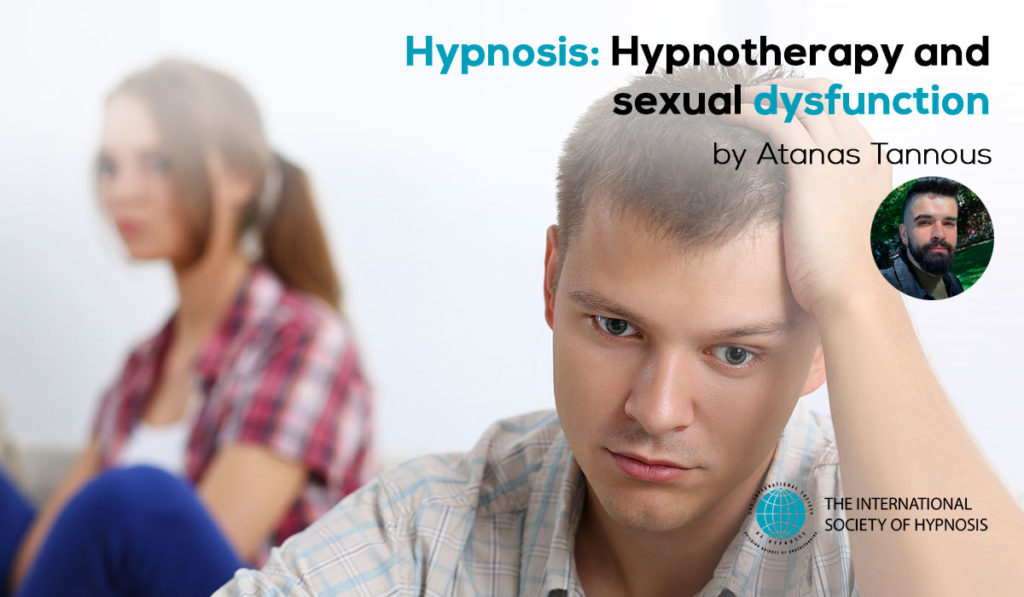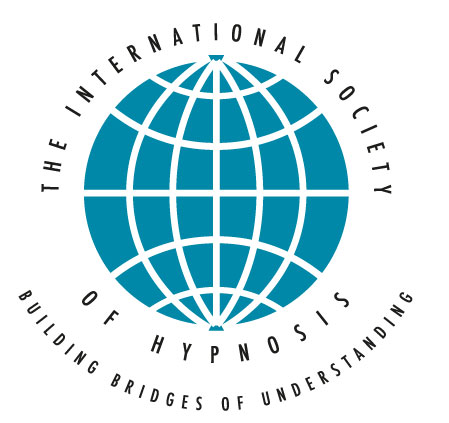

Essay by: Atanas Tannous
INTRODUCTION
One of the leading theoretical approaches of hypnosis describes it as a special state of consciousness in which certain normal human capabilities are heightened while others fade into the background. About 90 percent of the population has some ability to enter a hypnotic state. Hypnosis can be combined with any type of psychotherapy: supportive types, behaviour modification, dynamic therapy and others. Ludwig (1966), who coined the term “altered state of consciousness”, proposed the idea that in an altered state, one’s perceptions of an interaction with the external environment are different from those in the waking state. Tart (1975) sought to further define the relationship between attention and changes in psychological functioning characteristics. According to Tart, a discrete state of consciousness is defined as a “unique, dynamic pattern of configuration of psychological structures. Skill in focusing attention and the related ability to resist distraction are essential for the induction of hypnosis (Kihlstrom, 1985).
In trance, information is processed in ways different from those in the waking state. Less information is processed per unit of time than in ordinary waking consciousness. In deep states of trance, most subjects are oblivious of their surroundings. They are, instead, preoccupied with their own imagery and in the content of the given suggestion (Brown, et al., 2013).
The hypnotic state allows a person to be more open to discussion and suggestion. It can improve the success of other treatments for several conditions such as phobias, fears, anxiety, sleep disorder, depression, post-trauma anxiety, grief and loss.
Hypnotherapy might also be used to help with pain control and to overcome habits, such as smoking or overeating. It might also be helpful for a person with severe symptoms or in need of crisis management. In addition, literature indicates that hypnotic suggestion may provide the basis for the brief but effective treatment procedure that is applicable to a variety of sexual dysfunctions. The use of hypnosis as a diagnostic tool appears at least in part to rest on the assumption that it can provide access to material which may be unavailable to the patient and yet important to the aetiology or maintenance of sexual dysfunction.
SEXUAL DYSFUNCTION
Sexual dysfunctions are characterized by disturbances in sexual desire and in the psychophysiological changes associated with the sexual response cycle in men and women. Despite increasing demand for clinical services and the potential impact of these disorders on interpersonal relationships and quality of life, epidemiologic data are relatively scant. Based on the few available community studies, it appears that sexual dysfunctions are highly prevalent in both sexes, ranging from 10% to 52% of men and 25% to 63% of women. (Laumann et al., 1999).
DSM-IV divides the sexual cycle into four phases: (a) Desire, with its associated sexual fantasies; (b) Excitement, sexual pleasure and physiological changes; (c) Orgasm, the height of sexual pleasure with its concomitance; and (d) Resolution, the sense of muscular relaxation and feeling of wellbeing. Sexual dysfunction in men and women include sexual desire disorder, sexual aversion disorder, sexual arousal disorder, male erectile disorder (impotence), orgasmic disorders, premature ejaculation, sexual pain disorders and vaginismus, among several others.
A study aiming to assess the prevalence and risk of experiencing sexual dysfunction across various social groups and to examine the determinants and health consequences of these disorders concluded that sexual dysfunction is an important public health concern, and emotional problems likely contribute to the experience of these problems. Results indicated that demographic factors such as age are strongly predictive of sexual dysfunction, particularly erectile dysfunction, in addition to emotional instability, stress and anxiety. According to this study, sexual problems are most common among young women and older men (Laumann et al., 1999).
Another study by Marita P. McCabe (2015) on the incidence and prevalence of sexual dysfunction in women and men noted that there are more studies on incidence and prevalence for men than for women and many more studies on prevalence than for incidence for women and men. The data indicate that the most frequent sexual dysfunctions for women are desire and arousal dysfunctions. In addition, there is a large proportion of women who experience multiple sexual dysfunctions. For men, premature ejaculation and erectile dysfunction are the most common dysfunctions, with less comorbidity across sexual dysfunctions for men compared with women.
HYPNOTHERAPY AS AN EFFECTIVE TREATMENT
Hypnosis may be partly described as the systematic use of imagination for therapeutic purposes (Barber, 1978). In hypnotherapy for sexual dysfunction, imagery conditioning is particularly useful. Hariton (1973) emphasized the role of imagination in women during sexual intercourse and its therapeutic importance in increasing orgasmic response. The extensive literature on the clinical application of hypnosis in treating sexual arousal and dysfunctions at the second and third phase of human sexual response stress hypnotic imagery.
Although it is uncommon for several strategies to be employed while using hypnosis in sex therapy, at least five distinct uses can be distinguished. Among those is its use as a diagnostic tool to uncover etiological factors, also as an adjunct to behaviour therapy and to administer suggestions aimed at the direct removal of the symptoms, in addition to working through neurotic conflicts regarding psychosexuality.
In a case study by Hedis L. Deabler (1976) an hypnoanalytic approach was used in a series of hypnosis sessions. After induction, the patient was told to imagine himself in a sex situation with his wife. Using ideo-motor techniques, communication was set up so as to yield information about when he was able to visualize himself in the sex situation and then later about mental images that tended to appear relating to his carrying out the sex act. He concluded that hypnotherapy may be affectively used in the treatment of impotence through uncovering unconscious conflicts and previous negative experiences inhibiting the erectile response, releasing fears and anxiety and other inhibiting emotions, restructuring associations and orientation towards sex objects and functions, dispelling inhibiting identifications, particularly those relating to the mother figure and finally, ego building and strengthening suggestions to aid the male in successfully performing his sexual role.
On reviewing the global literature, it is apparent that some authors primarily employ a behavioural buy valium approach, such as the use of cognitive restructuring for frigidity (Araoz, 1983); other authors prefer to concentrate on the causation and root of the problem, such as the diary technique used by Bakich (1995) in the treatment of sexual aversion disorder; while a third group uses a combination of these, for example, Crasilneck and Hall (1985), who employed a combination of psychodynamic orientated psychotherapy and direct suggestion. Excellent treatment results have been obtained with all of these approaches and this demonstrates that there is no real antagonism between the behavioural approach and the psychoanalytic approach (Kraft, 1969).
In a study comparing common psychotherapy and hypnotherapy as treatment strategies for sexual dysfunction, a brief summary of 8 cases was reported where psychotherapy was used with some, while hypnotherapy was used with others. Harold J. Segel (1970) claimed that hypnosis was of doubtful value in the treatment of sex problems, at least in the strategy he employed in the cases he reported. Psychotherapy almost always trumped hypnotherapy in terms of the efficacy of the treatment and therefor the author credited psychotherapy for the cases in which a successful treatment was accomplished.
On the other hand, in another study, based on a world-wide search of the literature focusing on the application of hypnotherapy to the treatment of sexual dysfunction, the authors noted that the advantage of hypnosis, compared to psychotherapy, apart from hypnosis being the much quicker treatment route is that it can focus quickly and immediately on the causative factors which have been responsible for the sexual disorder and effectively pinpoints the date, time, and precise nature of the disturbance. Hypnotherapy offers a rapid and cost-effective form of treatment for sexual disorders, and it is recommended that these procedures are used in therapy (Kraft, T., & Kraft, D., 2007).
CONCLUSION
The effects of impotence, abulia or any other sexual deficit on the male and female are marked and usually psychologically destructive. There is hardly any event in an adult male’s life experience that is more devastating to his ego or self-image than that of witnessing his own inability or inadequacy to carry out his sexual role. This notion was not sufficiently analysed as an important factor in the literature reviewed in this summary.
Despite the large number of cases of sexual dysfunction treated with hypnosis and the multiple case studies in which hypnotherapy proved beneficial, we really know very little about the efficacy of hypnosis in the treatment of sexual dysfunction, this is primarily because the uncontrolled case study appears to be the prevailing methodology. Additionally, evidence for improvement in each of these cases appeared to be based solely on client’s self-report. Corroborative information from spouses was not obtained and methods of obtaining information from clients did not appear to be standardized.
In my view, further, more reliable research is needed in order to reach solid conclusions, with a significant level of confidence, about the effectiveness of hypnosis in the treatment of sexual dysfunctions. Furthermore, the ethicality of these procedures is less than clear, and many questions arise regarding the actual treatment process and what ethical guidelines it follows, if any at all. Such questions range from ones regarding the nature of the relationship between the hypnotist and the client and what kind of informed consent should be collected. In addition the power imbalance inherent in all healthcare professional relationships requires hypnotherapists to be sensitive to the ethical implications of the therapeutic encounter, especially in the context of a treatment of sexual dysfunction. Until these data are available, claims regarding the effectiveness of hypnotic suggestion in treating sexual dysfunction must be made with caution.

Essay by: Atanas Tannous
Supervisor: Dr. Katalin Varga
Eötvös Loránd University
Faculty of Clinical and Health Psychology
tannous.atanas@gmail.com
Master’s student of Clinical and Health psychology at Eötvös Loránd University (ELTE) in Budapest, Hungary.
Graduated from Tel Aviv University with a Bachelor’s in Psychology and Biology. Studied the LGBTQ+ community for my BA thesis as part of a seminar researching relations between different societal groups in Israel and Palestine. For my master’s studies,
I aspire to contribute to literature uncovering the benefits of psychedelic assisted psychotherapy and the applied treatment involving the use of psychedelic dosages along with ‘talk therapy’ as an efficient and innovative treatment method for disorders ranging from PTSD to depression and anxiety associated with chronic illness.
BIBLIOGRAPHY
- Laumann, E. O., Paik, A., & Rosen, R. C. (1999). Sexual dysfunction in the United States: prevalence and predictors. Jama, 281(6), 537- 544.
- Segel, H. J. (1970). Psychotherapy vs. hypnotherapy in the treatment of sex problems. American Journal of Clinical Hypnosis, 13(2), 128-130.
- Deabler, H. L. (1976). Hypnotherapy of impotence. American Journal of Clinical Hypnosis, 19(1), 9-12.
- Brown, J. M., & Chaves, J. F. (1980). Hypnosis in the treatment of sexual dysfunction. Journal of sex & marital therapy, 6(1), 63-74.
- Araoz, D., Burte, J., & Goldin, E. (2001). Sexual hypnotherapy for couples and family counselors. The Family Journal, 9(1), 75-81.
- Araoz, D. L. (1980). Clinical hypnosis in treating sexual abulia. American Journal of Family Therapy, 8(1), 48-57.
- de Shazer, S. (1978). Brief hypnotherapy of two sexual dysfunctions: The crystal ball technique. American Journal of Clinical Hypnosis, 20(3), 203-208.
- Kraft, T., & Kraft, D. (2007). The place of hypnosis in psychiatry, Part 2: Its application to the treatment of sexual disorders. Australian Journal of Clinical and Experimental Hypnosis, 35 (1), 1-18.
- Kihlstrom, J. F. (1985). Hypnosis. Annual review of psychology, 36 (1), 385-418.
- Fromm, E. (1987). Significant developments in clinical hypnosis during the past 25 years. International journal of clinical and experimental hypnosis, 35(4), 215-230.
- Brown, Daniel P., and Erika Fromm. Hypnotherapy and hypnoanalysis. Routledge, 2013.
- Tart, C. T. (1975). States of consciousness (p. 206). New York: EP Dutton.
- Ludwig, A. M. (1966). Altered states of consciousness. Archives of general Psychiatry, 15(3), 225-234.
- Bakich, I. (1995). Hypnosis in the treatment of sexual desire disorders. Australian Journal of Clinical and Experimental Hypnosis, 23, 70-70.
- Araoz, D. L. (1983). Hypnosex therapy. American Journal of Clinical Hypnosis, 26(1), 37-41.
- Crasilneck, H. B., Hall, J. A., & Hall, J. A. (1985). Clinical hypnosis: Principles and applications (pp. 245-246). New York: Grune & Stratton.
